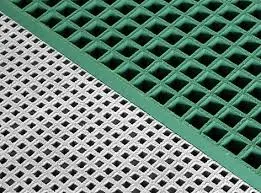
-
 Afrikaans
Afrikaans -
 Albanian
Albanian -
 Amharic
Amharic -
 Arabic
Arabic -
 Armenian
Armenian -
 Azerbaijani
Azerbaijani -
 Basque
Basque -
 Belarusian
Belarusian -
 Bengali
Bengali -
 Bosnian
Bosnian -
 Bulgarian
Bulgarian -
 Catalan
Catalan -
 Cebuano
Cebuano -
 China
China -
 China (Taiwan)
China (Taiwan) -
 Corsican
Corsican -
 Croatian
Croatian -
 Czech
Czech -
 Danish
Danish -
 Dutch
Dutch -
 English
English -
 Esperanto
Esperanto -
 Estonian
Estonian -
 Finnish
Finnish -
 French
French -
 Frisian
Frisian -
 Galician
Galician -
 Georgian
Georgian -
 German
German -
 Greek
Greek -
 Gujarati
Gujarati -
 Haitian Creole
Haitian Creole -
 hausa
hausa -
 hawaiian
hawaiian -
 Hebrew
Hebrew -
 Hindi
Hindi -
 Miao
Miao -
 Hungarian
Hungarian -
 Icelandic
Icelandic -
 igbo
igbo -
 Indonesian
Indonesian -
 irish
irish -
 Italian
Italian -
 Japanese
Japanese -
 Javanese
Javanese -
 Kannada
Kannada -
 kazakh
kazakh -
 Khmer
Khmer -
 Rwandese
Rwandese -
 Korean
Korean -
 Kurdish
Kurdish -
 Kyrgyz
Kyrgyz -
 Lao
Lao -
 Latin
Latin -
 Latvian
Latvian -
 Lithuanian
Lithuanian -
 Luxembourgish
Luxembourgish -
 Macedonian
Macedonian -
 Malgashi
Malgashi -
 Malay
Malay -
 Malayalam
Malayalam -
 Maltese
Maltese -
 Maori
Maori -
 Marathi
Marathi -
 Mongolian
Mongolian -
 Myanmar
Myanmar -
 Nepali
Nepali -
 Norwegian
Norwegian -
 Norwegian
Norwegian -
 Occitan
Occitan -
 Pashto
Pashto -
 Persian
Persian -
 Polish
Polish -
 Portuguese
Portuguese -
 Punjabi
Punjabi -
 Romanian
Romanian -
 Russian
Russian -
 Samoan
Samoan -
 Scottish Gaelic
Scottish Gaelic -
 Serbian
Serbian -
 Sesotho
Sesotho -
 Shona
Shona -
 Sindhi
Sindhi -
 Sinhala
Sinhala -
 Slovak
Slovak -
 Slovenian
Slovenian -
 Somali
Somali -
 Spanish
Spanish -
 Sundanese
Sundanese -
 Swahili
Swahili -
 Swedish
Swedish -
 Tagalog
Tagalog -
 Tajik
Tajik -
 Tamil
Tamil -
 Tatar
Tatar -
 Telugu
Telugu -
 Thai
Thai -
 Turkish
Turkish -
 Turkmen
Turkmen -
 Ukrainian
Ukrainian -
 Urdu
Urdu -
 Uighur
Uighur -
 Uzbek
Uzbek -
 Vietnamese
Vietnamese -
 Welsh
Welsh -
 Bantu
Bantu -
 Yiddish
Yiddish -
 Yoruba
Yoruba -
 Zulu
Zulu
fiberglass vessels and tanks
The Versatility of Fiberglass Vessels and Tanks
Fiberglass has revolutionized various industries, primarily due to its strength, durability, and resistance to corrosion. When it comes to vessels and storage tanks, fiberglass stands out as a preferred choice for both industrial and recreational applications. This article explores the advantages of fiberglass vessels and tanks, their applications, and the reasons behind their growing popularity.
One of the most notable properties of fiberglass is its lightweight design. Compared to traditional materials like steel or aluminum, fiberglass vessels can be constructed to be significantly lighter, resulting in higher fuel efficiency and lower transportation costs. This attribute is particularly appealing to the marine industry, where weight plays a critical role in performance. Fiberglass boats, whether for fishing, sailing, or leisure, offer a combination of maneuverability and speed that is hard to match.
Another significant advantage of fiberglass is its resistance to environmental factors. Fiberglass does not corrode, unlike metal vessels, which can deteriorate over time when exposed to saltwater or chemicals. This characteristic makes fiberglass an ideal choice for storage tanks as well, especially in industries dealing with corrosive substances, such as chemicals or wastewater. With the ability to withstand harsh environments, fiberglass tanks require less maintenance, leading to long-term savings for businesses.
fiberglass vessels and tanks

Moreover, fiberglass is customizable, enabling manufacturers to produce tanks and vessels in various shapes and sizes to meet specific needs. This flexibility is crucial for applications ranging from agricultural storage tanks for fertilizers and chemicals to marine vessels designed for specialized tasks like research and oceanographic studies. Manufacturers can engineer fiberglass products to include multiple features, such as internal linings for additional durability or insulation for temperature control.
The infusion of technology in manufacturing processes has further enhanced the properties of fiberglass vessels and tanks. Advanced composite materials allow for the development of stronger, more resilient products that can endure extreme conditions. The combination of fiberglass with other materials like carbon fiber or aramid fibers leads to improved performance metrics, paving the way for innovations in design and functionality.
Safety is another critical consideration in the use of fiberglass. Unlike metal, fiberglass does not pose a significant risk of explosion or fire when dealing with flammable substances, adding an extra layer of safety for users. Additionally, fiberglass vessels and tanks can be designed with built-in safety features such as overflow alarms and leak detection systems, ensuring optimal operational safety.
In conclusion, fiberglass vessels and tanks offer exceptional benefits, including lightweight design, corrosion resistance, customization, advanced technology integration, and enhanced safety features. Their applications are vast, ranging from marine uses, such as boats and yachts, to industrial applications like chemical and water storage. As industries continue to seek durable, efficient, and safe alternatives to traditional materials, fiberglass is set to maintain its position as a vital resource. The growing demand for fiberglass infrastructure reflects its successful integration into modern technology and industry, promising a future filled with potential advancements and innovations. Whether on the sea or in industrial settings, fiberglass vessels and tanks are indeed a testament to material science's evolving capabilities.









